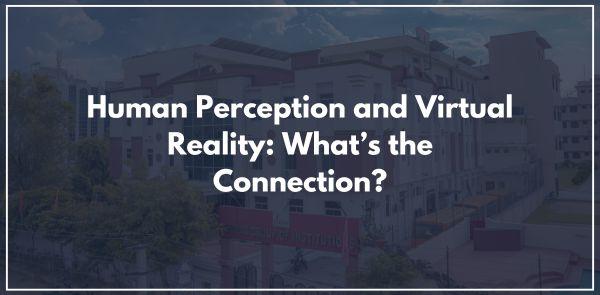
Introduction
Virtual reality (VR) has emerged as a groundbreaking technology that immerses users in a computer-generated environment, allowing them to interact with digital worlds in ways that were once the realm of science fiction. As VR technology continues to evolve, understanding the connection between human perception and virtual reality becomes increasingly important. This article explores how human perception influences the design and effectiveness of virtual reality experiences, and the role of educational institutions like the Poddar Group of Institutions in preparing students for careers in this exciting field.
Understanding Human Perception
Human perception is the process by which we interpret and make sense of sensory information from our environment. It involves the integration of data from our senses—sight, sound, touch, taste, and smell—to form a coherent understanding of the world around us. Perception is not merely a passive reception of stimuli; it is an active process influenced by various factors, including prior experiences, cultural background, and cognitive biases.
The Role of Sensory Input
In the context of virtual reality, sensory input plays a crucial role in shaping user experiences. VR systems aim to replicate real-world sensations to create a sense of presence, making users feel as though they are truly "inside" the virtual environment. This is achieved through a combination of visual, auditory, and haptic feedback.
- Visual Perception: The visual component of VR is perhaps the most critical. High-resolution displays, realistic graphics, and 3D rendering techniques are employed to create immersive environments. The brain processes these visual cues to establish depth, distance, and spatial awareness, which are essential for a convincing VR experience.
- Auditory Perception: Sound is another vital element in VR. Spatial audio techniques simulate how sound behaves in the real world, allowing users to perceive the direction and distance of sounds. This auditory feedback enhances immersion and helps users navigate the virtual space more intuitively.
- Haptic Feedback: Haptic technology provides tactile sensations that mimic real-world interactions. For example, when a user touches a virtual object, haptic feedback can simulate the feeling of texture or resistance, further enhancing the sense of presence.
The Connection Between Human Perception and Virtual Reality
1. Creating Immersive Experiences
The primary goal of virtual reality is to create immersive experiences that engage users on multiple sensory levels. By understanding how human perception works, VR developers can design environments that effectively trick the brain into believing it is experiencing something real. This connection is crucial for applications in gaming, education, training, and therapy.
2. Overcoming Perceptual Limitations
While VR has the potential to enhance human perception, it also faces challenges. For instance, users may experience motion sickness or disorientation if the virtual environment does not align with their sensory expectations. Understanding the nuances of human perception allows developers to create smoother transitions and more realistic movements, minimizing discomfort and enhancing user experience.
3. Enhancing Learning and Training
In educational settings, such as those at the Poddar Group of Institutions, VR can be a powerful tool for enhancing learning. By leveraging human perception, educators can create simulations that allow students to engage with complex concepts in a hands-on manner. For example, medical students can practice surgical procedures in a risk-free virtual environment, improving their skills and confidence before working with real patients.
4. Therapeutic Applications
Virtual reality is also being used in therapeutic contexts, such as exposure therapy for phobias or PTSD. By understanding how human perception influences emotional responses, therapists can design VR experiences that help patients confront and manage their fears in a controlled environment. This innovative approach has shown promising results in improving mental health outcomes.
The Role of Educational Institutions
Educational institutions like the Poddar Group of Institutions play a vital role in advancing the field of virtual reality and its connection to human perception. By offering programs in computer science, psychology, and design, these institutions prepare students to explore the interdisciplinary nature of VR technology.
1. Interdisciplinary Learning
The integration of knowledge from various fields—such as psychology, computer science, and design—is essential for creating effective VR experiences. Institutions can foster interdisciplinary collaboration, encouraging students to work together on projects that explore the intersection of human perception and virtual reality.
2. Research Opportunities
Colleges can provide research opportunities for students to investigate how human perception influences VR experiences. By conducting experiments and gathering data, students can contribute to the development of best practices in VR design, ultimately enhancing user experiences.
3. Industry Partnerships
Collaborations with industry partners can provide students with real-world experience in VR development. By working with companies that specialize in VR technology, students can gain insights into the latest trends and challenges in the field, preparing them for successful careers.

